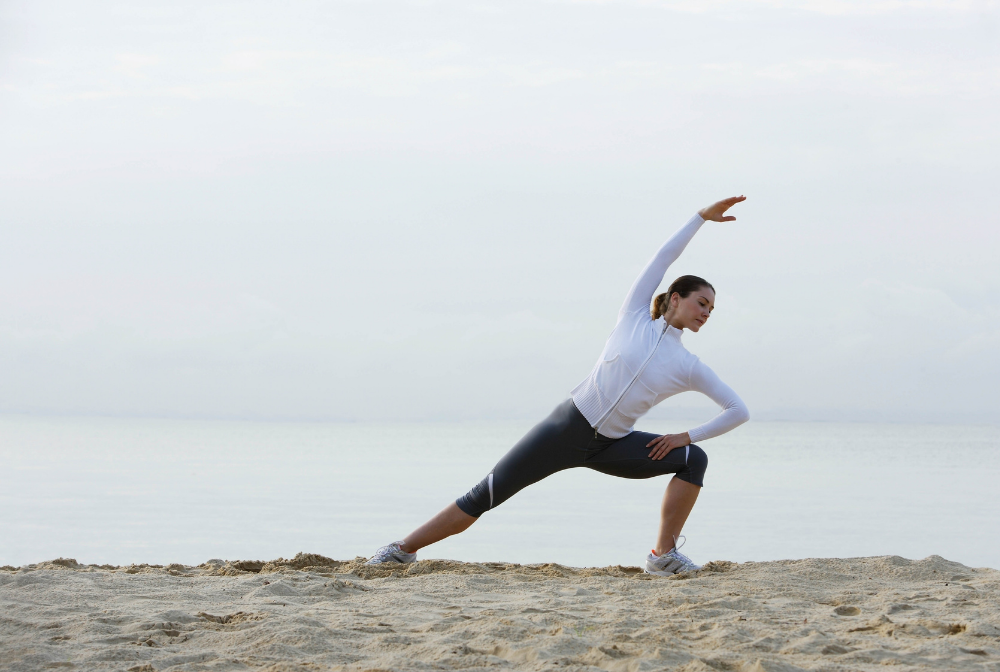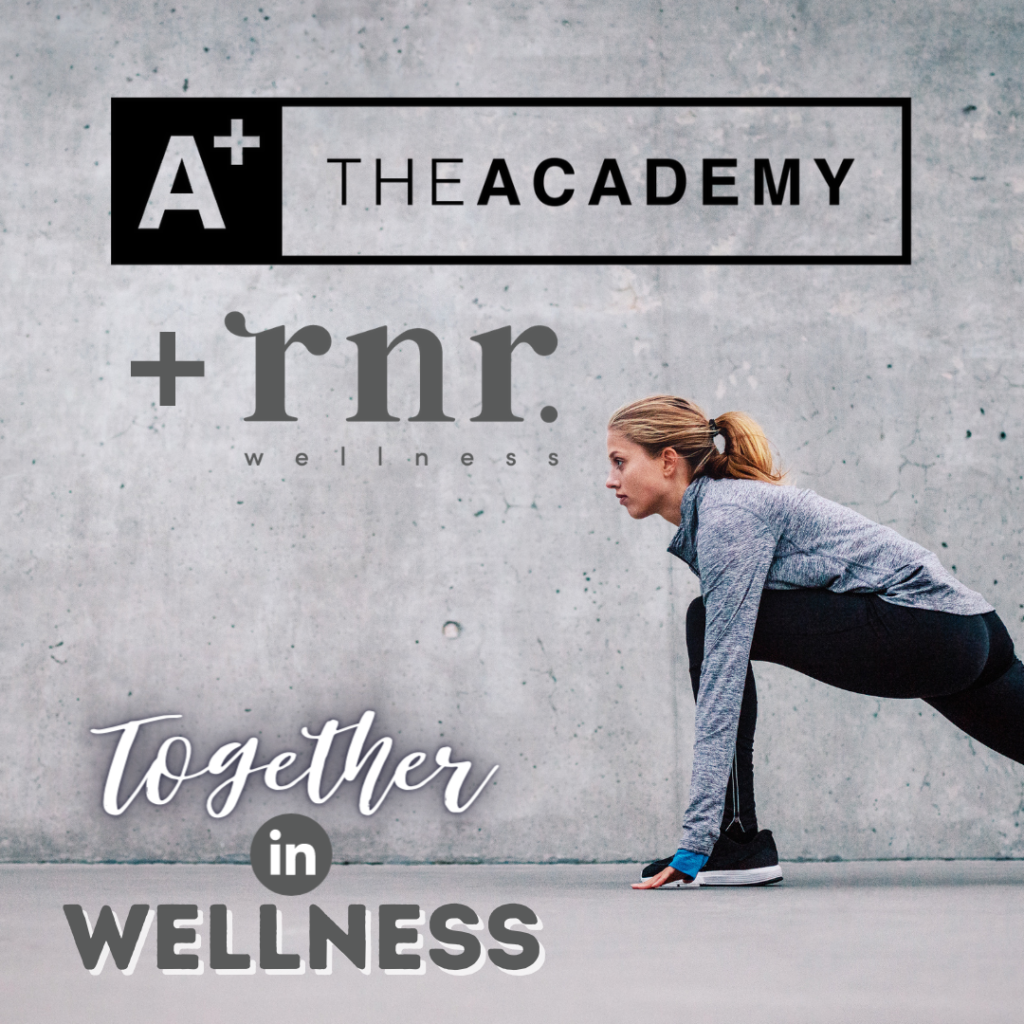
From Heavens Academy, Together in Wellness with rnr Wellness
Over the past year, workout programs shifted as we all worked to adapt to life in a pandemic world. Many of us moved our workouts outside, taking advantage of the great outdoors. Mandated gym and recreation facility closures have introduced/reintroduced many of us to walking, hiking and running and these activities have now become a big part of daily lives. Along with the positive physical and emotional benefits, many of us have also experienced an increase in tightness in the hips, lower back, hamstrings and calves.
As a species, walking is something we do every day and for many, we often adopt the “who needs to stretch” mentality following our daily walk. Or maybe this has happened to you… you go for a run and realize that your zoom meeting starts in ten minutes so you find yourself flying into the shower hot off the pavement, so to speak. As a result, many of us miss the stretch component that is so important to our bodies.
Being frank, stretching pre and post workout are absolutely essential to ensure we can continue doing the workouts we love for years to come. Without the balance of stretching “tight and/or shortened” workout muscles post workout, we will continue to get shorter, tighter and we may see a decreased range of motion across the joints. This could contribute to an increased potential for injury and a loss of overall function throughout the body.
Stretching can be one of the keys to the fountain of youth. By maintaining and/or restoring length in muscles and range of motion around joints, we will maintain natural everyday function longer as we will continue to move more effectively, with less pain, as we age. For example, one reason for the “senior shuffle” could be tight hip flexors. The length of the stride is significantly shortened due to tight muscles, reducing the ability to swing the leg forward and back… hence the shuffle.
For walkers and runners, key muscle groups that need to be addressed both pre and post workouts are:
Hip Flexors –Think about how many walking steps you take, how many stairs you climb, how long a run you complete and how far you cycle. These are some of the many activities that involve hip flexion. Hip flexors are strong and often tight and with increased repetition, tightness. Tight hip flexors cause problems throughout the body, including but not limited to: knee and lower back pain.
A low runners lunge is a perfect release for tight hip flexors. Bend deeply into your front knee, maintaining a 90 degree angle at the joint, and extend your opposite leg behind you, allowing the hip on the front leg to open. (hands on the floor will help maintain balance.)
Hamstrings –We sit a lot and many activities can also contribute to TIGHT hamstrings! Tightness in this muscle group, that runs up the backs of the legs, can cause all sorts of challenges including lower back pain, glute tightness and other issues in the kinetic chain.
Sit tall (on the floor or on the edge of a chair) and hip hinge forward without rounding the spine. Go to the point of tightness and focus on relaxing the tightness that you feel as you stretch the hamstrings.
Glutes/hips and Quads – The repetitive motion, incurred in running/walking, of the hip joint, in the frontal plane (like a pendulum) needs to be counter balanced. Glutes are a powerful muscle group but stretching can help keep the glutes functioning effectively.
An effective gluteal stretch can be achieved as follows: Stand on one leg, cross the opposite foot over the thigh of the supporting leg, let the hip of the lifted leg open to the side, bend into the supporting leg and stick your butt out. You may want to hold onto something for balance. This external hip stretch not only allows the joint to open in a manner different than how it is used in walking or running, but also allows us to stretch deep into the glutes of the lifted leg.
Quadriceps is the muscle group composed of the four big muscles of the front of the thigh and they can easily tighten during running/walking. This tightness can contribute to soreness in the knees.
To stretch the quads, stand on one leg, bend the opposite knee and grab onto the top of the foot. Be sure that your bent knee is pointing straight down to the floor below you as if you had a giant spotlight on your kneecap and you are lighting the floor right below you. As you draw the heel of your bent knee towards your glutes, apply pressure between your hand and the top of the foot to create some resistance. This will help keep the knee safe in flexion.
*Tight quads, glutes, hamstrings and hip flexors will affect running/walking stride, impede your gate and cause imbalances in the rest of your body.
Calves – Taking a lot of the brunt of the impact during running and walking. calves, need to be stretched.
Stand in a “split leg position, one leg forward, one leg back, slightly separated like standing on train tracks”, both toes pointing forward. Bend into your front knee, shifting the weight slightly forward as you extend and reach the heel on the back leg towards the floor. Keep the back leg straight.
Chest and shoulders – Are you wondering why this area needs to be targeted? Yes, it is true that your chest and shoulders play a big role in walking or running. The pumping motion of the shoulder joint is initiated by the muscles that surround the joint and they become tight through the repetitive, pumping movement of the arms. In addition, as we fatigue, our posture deteriorates and the chest muscles, which are typically tight to begin with, tighten even more. The upper back is a muscle group area that helps us fight against gravity when we are upright walk/running position. If we are tight in the chest, we inhibit the ability of the upper and middle back muscles to maintain a strong upright posture.
Interlace your fingers together behind your back and then gently lifting your hands away from your glutes as you open up both the chest and shoulder areas.
Core – Most of us realize that strengthening the core is important, taking time to Lengthen those muscles will have a great impact on your walk/run. A strong core will help improve your stride, give you more confidence in your experience and help keep you safe on unstable surfaces.
Take a deep breath, lifting your arms overhead and interlace your fingers, stretch to one side and then do the other side. Then keep your fingers clasped, bend your elbows and place your hands behind your head. Engage your core (draw your navel to your spine) and gently lift your heart up creating a bit of extension through your chest, shoulders and the big band of abdominal muscle that runs from the bottom of your rib cage to your pubic bone, the rectus abdominus.
You might also want to consider complementing your walk/run program with Yoga and/or Pilates. These activities offer the strengthening needed to balance the body as well as the stretch required to lengthen all of your muscles.
If you are familiar with a yoga sun salutation A, this is a great option to add at the end of your run – it’s fast, efficient and addresses almost all of the muscle groups mentioned above.
Stretching is something we often put at the bottom of the “to do list” though it should always be a top priority. Taking time to stretch can save you from tightness, injury and the improved posture will enhance your overall feeling of strength and energy.
Lisa Kingston, Program Manager, Group Fitness, Yoga and Pilates Instructor
Karen Vouri, Personal Trainer, Group Fitness, Yoga and Pilates Instructor
